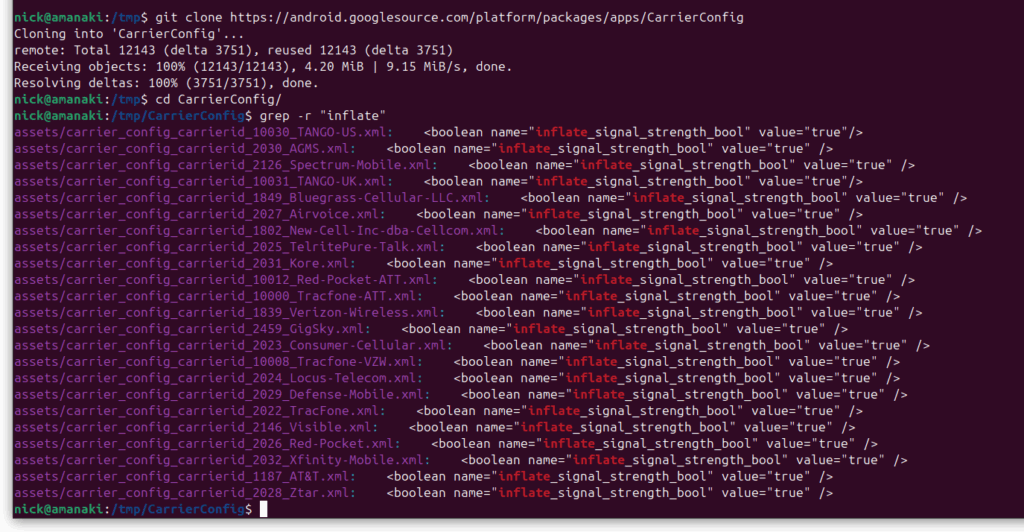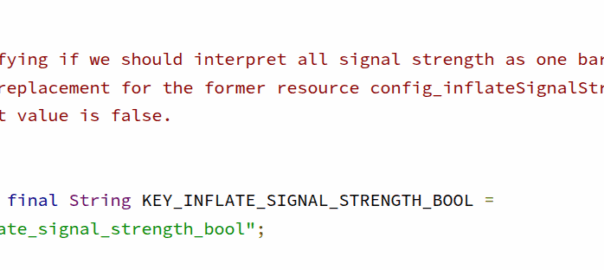Poking around in Android the other day I found this nugget in Carrier Config manager; a flag (KEY_INFLATE_SIGNAL_STRENGTH_BOOL) to always report the signal strength to the user as one bar higher than it really is.

It’s not documented in the Android docs, but it’s there in the source available for any operator to use.
Notably both AT&T and Verizon have this flag enabled on their networks, I’m not sure who was responsible for requesting this to be added to Android, nor could I find it in the git-blame, but we can see it in the CarrierConfig which contains all the network settings for each of these operators.

Operators are always claiming to have the biggest coverage or the best network, but stuff like this, along with the fake 5G flags, don’t help build trust, especially considering the magic mobile phone antennas which negate the need for all this deception anyway.

